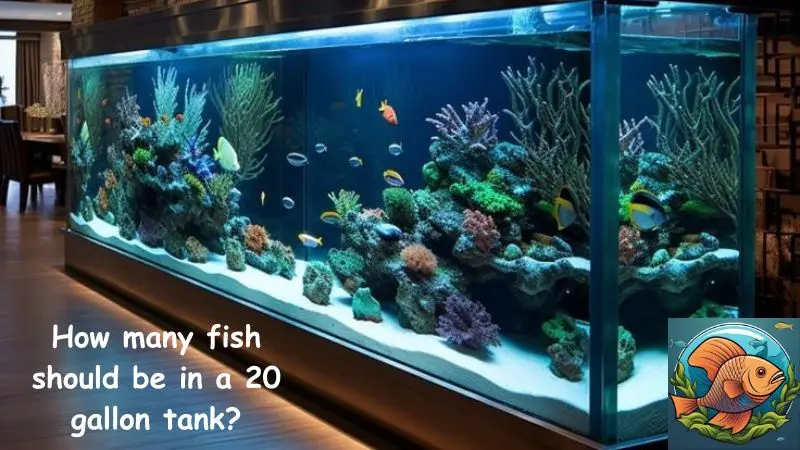fish farming
How many fish should be in a 20 gallon tank?
The allure of a vibrant, bustling aquarium is undeniable. Watching fish dart and play in their watery world can be a calming and mesmerizing experience. But before you dive headfirst into the world of fishkeeping, it’s crucial to understand the importance of responsible tank sizing. A common question that arises for aspiring aquarists is: How many fish should be in a 20 gallon tank? This seemingly simple question has a complex answer, one that depends on a variety of factors beyond just the tank’s volume.
This essay of fishtankmagic.com will delve into the intricacies of stocking a 20-gallon aquarium, exploring the factors that influence the number of fish you can safely house, and providing a comprehensive guide to ensure the well-being of your aquatic companions.
Understanding the Basics: Tank Size and Bioload
The first step in determining the appropriate number of fish for your 20-gallon tank is to grasp the concept of bioload. Bioload refers to the amount of waste produced by the fish in the tank. This waste includes ammonia, nitrites, and nitrates, which are toxic to fish if allowed to build up. A larger tank can handle a higher bioload because it provides more space for beneficial bacteria to break down these harmful substances.
A 20-gallon tank is considered a small to medium-sized aquarium. While it’s tempting to cram as many fish as possible into this space, doing so can quickly lead to water quality issues and endanger your fish. The general rule of thumb for stocking a tank is to allow one inch of fish per gallon of water. However, this rule is a very basic guideline and should be adapted based on the specific needs of the fish you choose.
Beyond the Inch-Per-Gallon Rule: Factors to Consider
The inch-per-gallon rule is a starting point, but it’s essential to consider several other factors that influence the appropriate stocking levels for your 20-gallon tank. These factors include:
- Fish Species: Different fish species have vastly different space requirements, metabolic rates, and waste production levels. For example, a single goldfish can produce as much waste as five small tetras. Some fish, like angelfish, require a larger tank due to their size and territorial nature. Researching the specific needs of the fish you intend to keep is crucial.
- Fish Size: While the inch-per-gallon rule focuses on the size of the fish at maturity, it’s equally important to consider their growth potential. A small, juvenile fish may seem appropriate for a 20-gallon tank, but if it grows to be significantly larger, it may quickly outgrow the space.
- Fish Temperament: Some fish are naturally more aggressive or territorial than others. If you plan to keep multiple species together, it’s essential to select compatible fish with similar temperaments to avoid bullying or aggression.
- Tank Filtration: The type and efficiency of your filtration system play a significant role in managing bioload. A powerful filter can handle a higher bioload, allowing you to stock your tank with more fish. However, even with a robust filtration system, it’s crucial to avoid overstocking, as this can lead to stress and disease in your fish.
- Water Changes: Regular water changes are essential for maintaining healthy water quality in any aquarium. A 20-gallon tank will require more frequent water changes than a larger tank to manage bioload. The frequency of water changes will depend on the number of fish you keep and the efficiency of your filtration system.
How many fish should be in a 20 gallon tank? Examples
Given the factors discussed above, it’s clear that there’s no one-size-fits-all answer to the question of how many fish should be in a 20-gallon tank? The number will vary depending on the specific fish species you choose. However, here are some examples of fish that are generally suitable for a 20-gallon tank, keeping in mind the importance of responsible stocking:
- Small, Peaceful Schooling Fish: A 20-gallon tank can comfortably house a school of 6-8 small, peaceful fish like neon tetras, zebra danios, or cardinal tetras. These fish are known for their vibrant colors and active behavior, making them a popular choice for beginners.
- Larger, Solitary Fish: A 20-gallon tank can also accommodate a single, larger fish like a betta, dwarf gourami, or a small angelfish. These fish are generally more solitary and require less space than schooling fish.
- Combination of Species: A well-planned 20-gallon tank can house a combination of small schooling fish and a larger, solitary fish. For example, you could keep a school of 6-8 neon tetras with a single betta or a dwarf gourami.
The Importance of Research and Observation
Before adding any fish to your 20-gallon tank, it’s essential to conduct thorough research on the specific needs of each species. Consider their size, temperament, water parameters, and dietary requirements. It’s also crucial to observe your fish carefully after introducing them to your tank. If you notice any signs of stress, such as rapid breathing, loss of appetite, or hiding, it may be necessary to adjust your stocking levels or provide additional hiding places.
The Benefits of Responsible Stocking
Responsible stocking practices are crucial for the health and well-being of your fish. Overstocking can lead to:
- Poor Water Quality: Increased bioload from too many fish can overwhelm the filtration system, leading to a buildup of toxic ammonia, nitrites, and nitrates.
- Stress and Disease: Crowded conditions can cause stress and weaken the immune system of your fish, making them more susceptible to disease.
- Aggression and Bullying: Overstocking can lead to competition for resources, such as food, territory, and hiding places, resulting in aggression and bullying among your fish.
- Reduced Lifespan: Poor water quality and stress can significantly shorten the lifespan of your fish.
Conclusion: A Balanced Ecosystem
A well-stocked 20-gallon tank is a beautiful and rewarding experience. By understanding the factors that influence bioload and carefully selecting your fish, you can create a balanced ecosystem where your aquatic companions can thrive. Remember, the key is to prioritize the well-being of your fish by avoiding overstocking and providing them with a spacious and comfortable environment. A responsible approach to stocking your 20-gallon tank will ensure that you enjoy the beauty and wonder of your aquarium for years to come.












